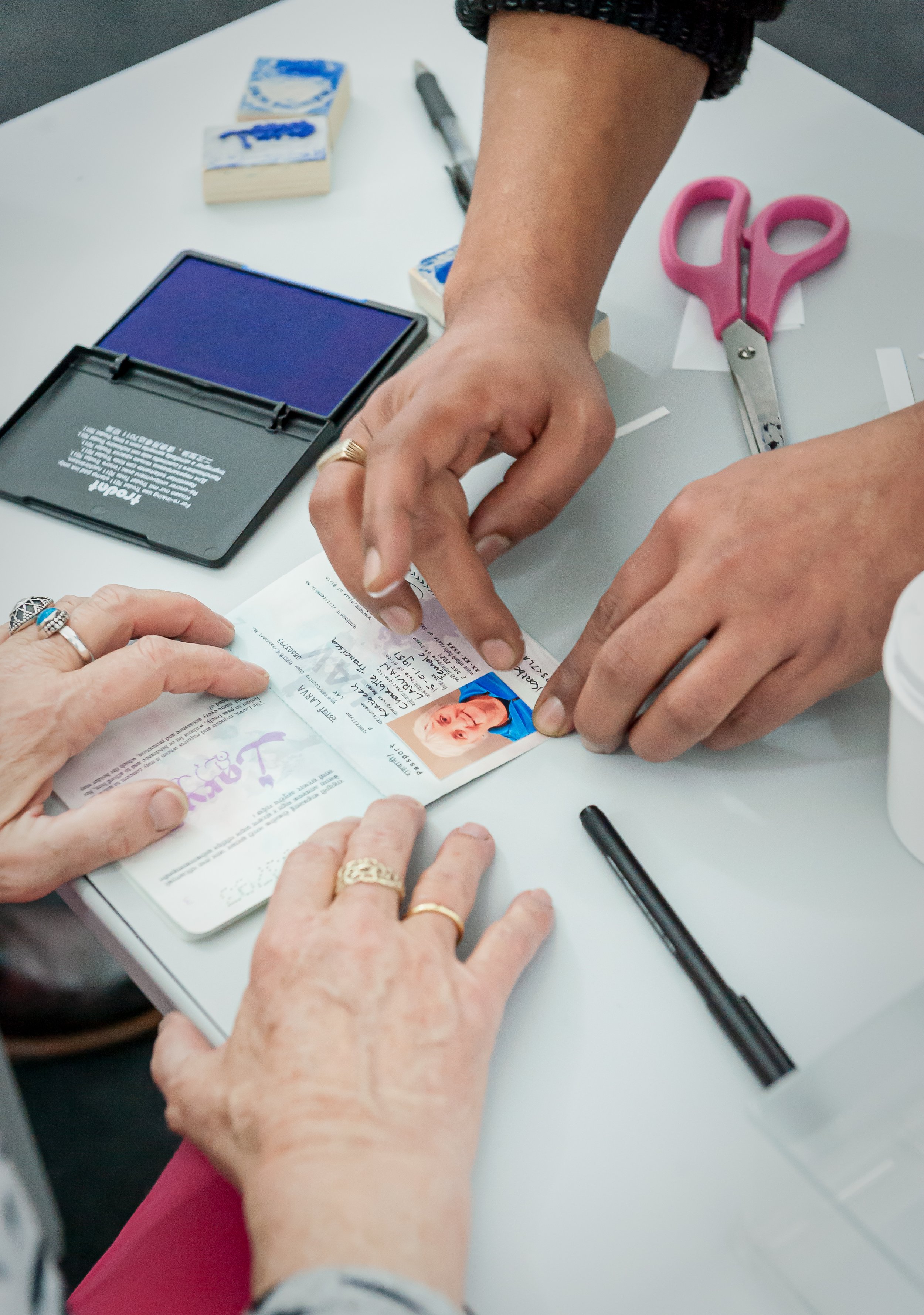
Project: Metamorphosis
Artist: Ganesh Nepal
Mentoring residency: February – December 2021
Opening program: Saturday, 4 December 2021, 14.00-17.00
On view: 4 December 2021 – 22 January 2022
Ganesh Nepal's research-based work explores how meanings, expectations and conflicts are associated with different localities and shows the reality of how vulnerable we are, especially when we find ourselves seemingly without history, self-esteem and reference points.

Background
Metamorphosis is the outcome of Ganesh Nepal’s year-long research project, while being HMK’s mentoring artist-in-residence. With this project, the artist aims to expose the hidden narratives of those continuously living through the experience of being treated as an outsider.
Building on the personal impact of finding himself in a place where he shares the same space but not the same right, Ganesh is reflecting on the notion of identity and the lack thereof when we find our bodies in foreign and hostile places – where we are treated with suspicion but forced to (re)build our identity after it has been diminished to none. Where do we find safety when shelters seem inaccessible? Metamorphosis envisions a metaphorical Larvae-state for all displaced bodies that need acceptance, opportunity and nourishment in order to grow and transform into their full potential.
Ganesh Nepal says: The project Metamorphosis shows the reality of how vulnerable we are, particularly when we find ourselves seemingly without a sense of self, without history and almost without the prospect of a better future. When your existence comes under a hammer of questions, requirements and paper trails, it becomes almost impossible to battle the demons that make your self-esteem crumble. Enslaved to exist in-between, it dampens your spirit, it stifles your being and it shackles your every dream. The frequency and intensity of the violent storms of rejection seem to be increasing; before getting in, I already feel evacuated.
The project culminates in the development of a specially developed passport and stamps for approval, presented in a performative installation at the heart of Hotel Maria Kapel – hinting at the places of administration, bureaucracy and paper trails that are so often part of this experience. Visitors are invited to take a passport, thus becoming citizens of the accepting State of Larvae. Accompanying Metamorphosis, Ganesh’s film Avatar (2021) will be shown with the installation. In the cinema of HMK, the film This Man Who Is Called Man (2019) further introduces the audience with Ganesh’s practice.
Programme Saturday 4 December:
14:00 – doors open
14:30 – introduction
14:45 – talk and conversation by Iskra Vuksic, with Ganesh and the audience
15:30 – time to see the presentation and films
16:00 – drinks
17:00 – doors close

Movies on view
This Man Who Is Called Man (2019) focuses around migrant brick workers in Nepal, his home country. With this film, Ganesh explores how a place is, and becomes influential in constructing, deconstructing and transforming an individual’s identity and sense of locality during processes of migration and how displacement (forced or voluntary) can be traumatic for the individual. This Man Who Is Called Man investigates the complexity of social and political relationships and human behavior in which memories and factual narratives about identity and symbolic figures can sift and revise across time.
Avatar (2021) sheds light on the individual in search of identity and safety in an unreasonable and apparently meaningless world. Departing from the idea that identity is a delicate and transformative construct, Avatar explores the complexity of social and political interrelationships and human behaviors. From here, Ganesh raises the following question: ‘How are identities compounded and (re)negotiated when they are in conflict with one another?’

Bio Ganesh Nepal
Ganesh Nepal (b. 1985, Nepal) lives and works in Weesp, the Netherlands. He holds a MA in Fine Arts (2019) from HKU, Utrecht and BA in Visual Arts (2014) from Gerrit Rietveld Academie, Amsterdam. Nepal’s body of work includes video, installations, (lecture) performances, and writings. The artist examines interconnections and influences between individuals and environments: he specially addresses the question of construction and transformation of identity as a consequence of forced or voluntary displacement.







